By Boris Behncke.
Among the various eruptive manifestations of Etna in Sicily, one of the most characteristic is episodic lava fountaining, known also as “paroxysms”. In most cases, the Etnean paroxysms produce tall lava fountains and lava flows, which rapidly expand in the summit area; eruption columns often rise up to more than 10 km high, and lead to abundant fallout of ash and lapilli in surrounding areas.
Since the 1970s, in the summit area there have been hundreds of these episodes, including the 66 paroxysms of the year 2000 and 50 paroxysms in 2011-2013 from the Southeast Crater.
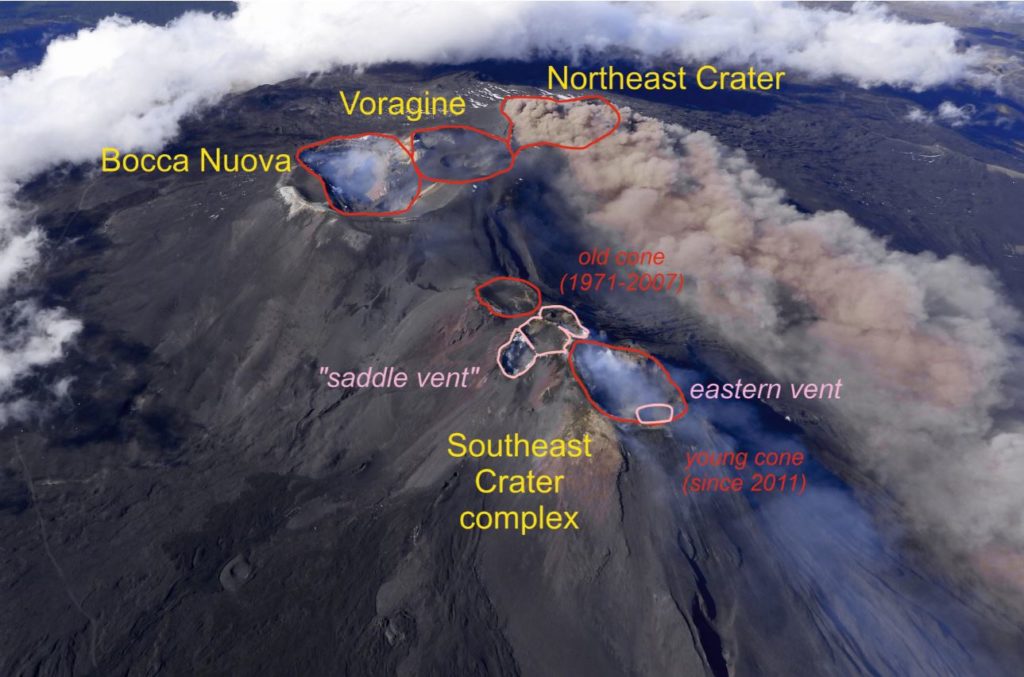
The latest paroxysmal episodes have taken place at the crater Voragine in December 2015 and May 2016; since then, summit eruptions have not reached the intensity of a paroxysm. Until the evening of 13 December 2020.
In the summer of 2019, the protagonist among the summit craters of Etna was the Southeast Crater. From September 2019 until the spring of 2020, the Voragine crater did the show. During the summer and autumn of 2020, the summit eruptive activity was mainly concentrated at the Southeast Crater, which was the seat of nearly continuous, though rather mild, Strombolian activity. The focus of this activity was a vent at the center of the Southeast Crater complex, known as the “saddle vent”, which lies in the position where, until 2015, there was a pronounced morphological saddle between the old and new cones of the Southeast Crater.
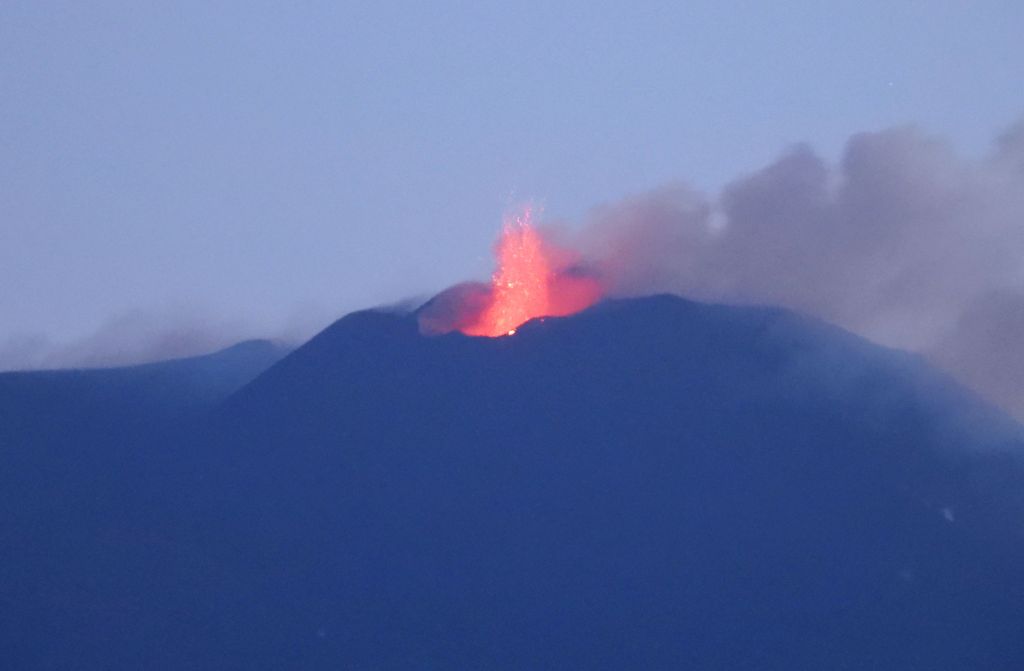
From September onward, also the Northeast Crater produced intra-crater Strombolian activity, and finally, in early November, activity resumed at the Bocca Nuova, which had been largely filled with lava from the Voragine during the winter and spring. Finally, in early December, also the easternmost of the Southeast Crater vents resumed Strombolian activity, after having been silent for nearly a year.

From 6 December on, activity at the Southeast Crater diminished notably, as did the volcanic tremor amplitude. However, on the evening of 13 December the volcanic tremor amplitude rose rapidly, and simultaneously Strombolian activity intensified at the “saddle vent”, passing into lava fountains at 23:00 local time. At 23:15, the southwestern flank of the Southeast Crater started crumbling, spawning pyroclastic flows at 23:15, 23:16 and 23:30 (local time), which were directed toward southwest. The first and last of these flows were small and only a few hundred meters long, the second was much larger, with a runout length of approximately 2 km on the flat terrain between the summit cones and the prehistoric cone of Monte Frumento Supino.
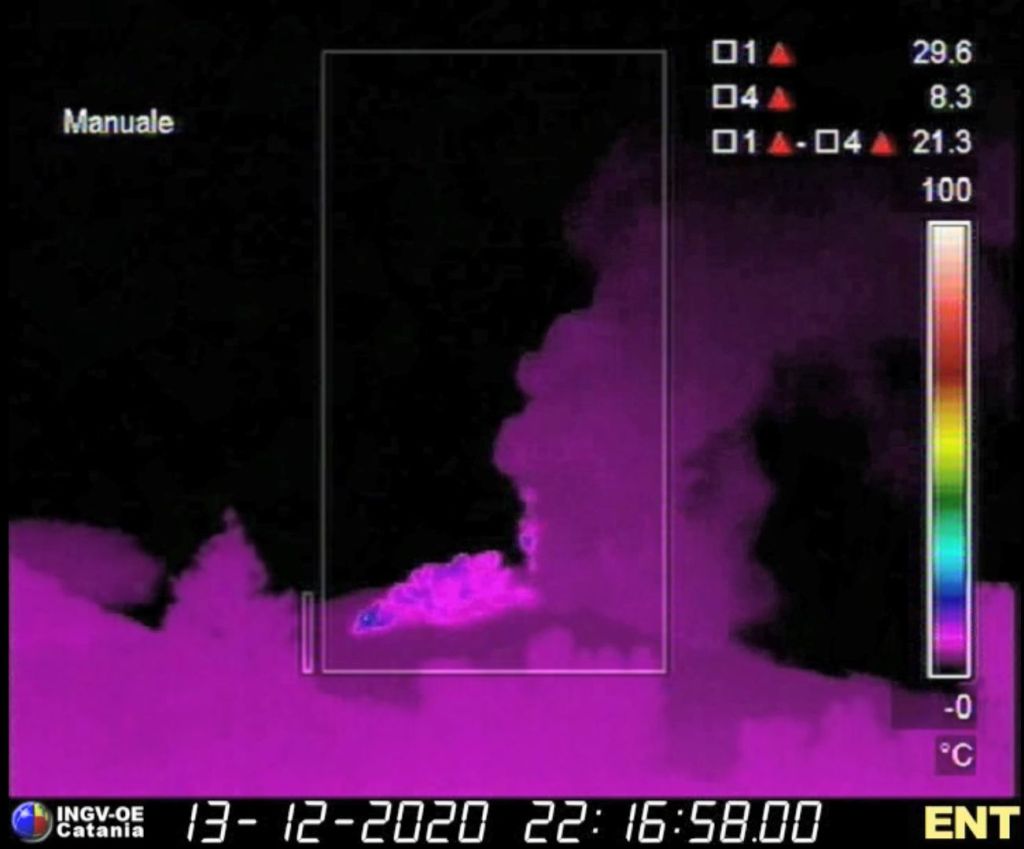
Two lava flows were emitted, one on the southern flank of the cone (presumably before the collapse of the southwestern flank), and one from the scar left by the collapse, which advanced south-southwestward, passing to the west of the Monte Barbagallo cone (formed during the 2002-2003 eruption).
Lava fountaining during this first phase lasted a few tens of minutes and ended shortly before midnight. Still, weak Strombolian activity continued, and the lava flow toward southwest was slowly advancing, whereas the southern flow was stagnant. At about 01:00 on 14 December, the Strombolian activity increased again and soon culminated in a second phase of lava fountaining, which lasted only 10 minutes.
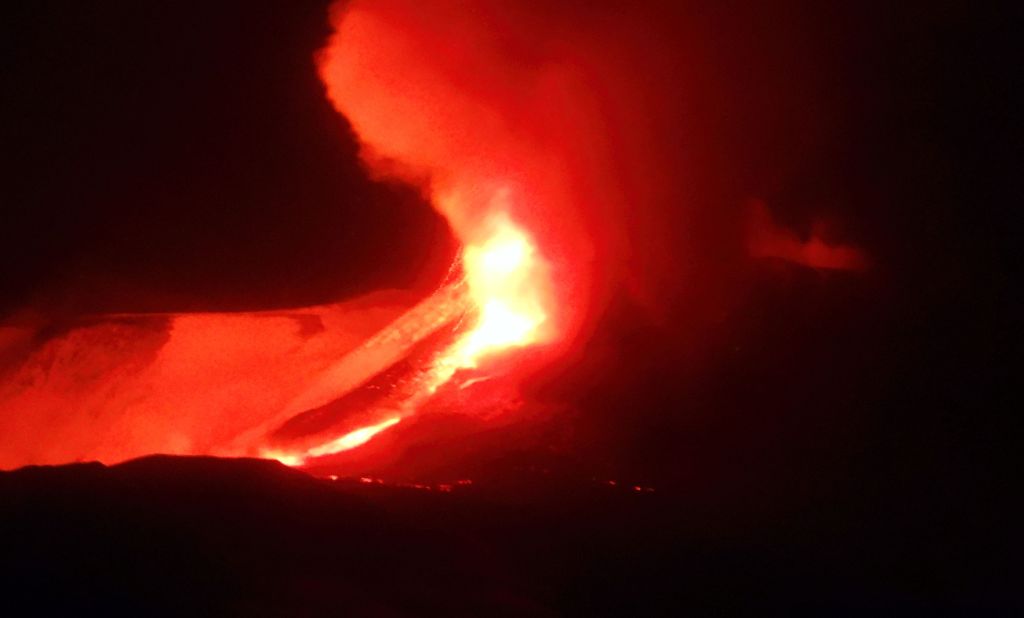
(Photographer: Boris Behncke)
A new lava flow descended through the breach left from the collapse of the southwestern flank of the cone, overriding the previous southwestern flow. Again, this phase of lava fountaining was followed by weak Strombolian activity, which once more increased at about 02:00 and passed into a third phase of lava fountaining. Compared to the earlier phases, this one was much less intense but lasted one hour. A new lava flow descended on top of its predecessors toward southwest.
During the rest of the night, modest Strombolian activity continued, whereas lava effusion ceased, and at sunrise only a few incandescent spots were visible on the front of the southwestern lava flow.
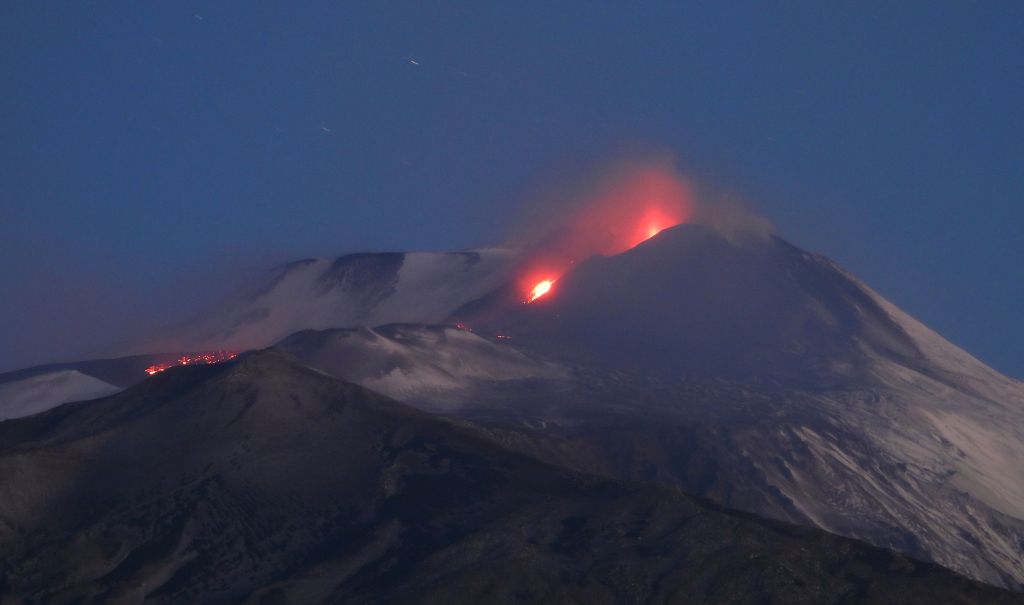
During the day of 14 December, ash emission increased, and an explosive activity started at a vent further east on the Southeast Crater complex, between the “saddle vent” and the easternmost vent. A field visit carried out by INGV-Osservatorio Etneo staff revealed that the morphology of the Southeast Crater had been thoroughly altered by the activity during the previous night. The “saddle vent” was much enlarged, with a deep notch in its southwestern rim, from which the scar left by the flank collapse extended to the base of the cone.
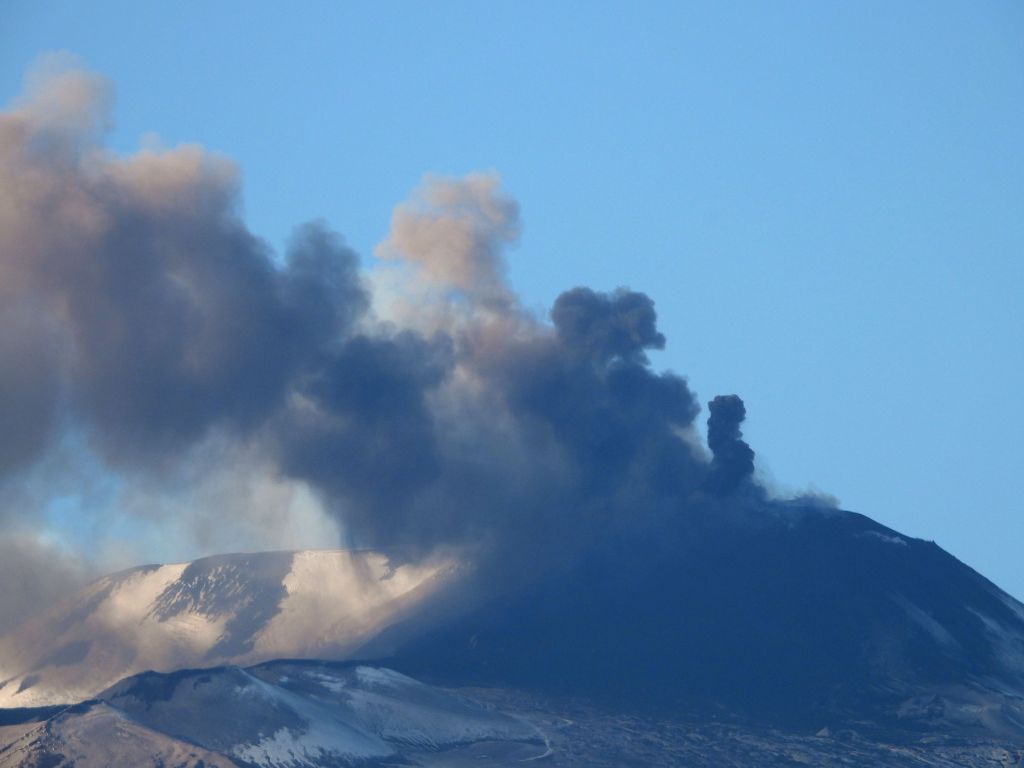
Nearly continuous Strombolian activity continued on the evening of 14 December from the two active vents, producing loud bangs audible in the Etnean area. During an interval of lesser activity in the night, Strombolian activity once more intensified in the morning of 15 December, now with three vents in explosive activity. Lava emission resumed feeding a flow through the collapse scar toward southwest. In the afternoon of 15 December, eruptive activity rapidly diminished and substantially was over by the evening. Occasional ash emissions continued from the Bocca Nuova and Voragine craters. As of 16 December afternoon, the volcano remains relatively quiescent.
The activity of Etna is being constantly monitored by the INGV-Osservatorio Etneo in Catania and reported to the Civil Defense Department.
